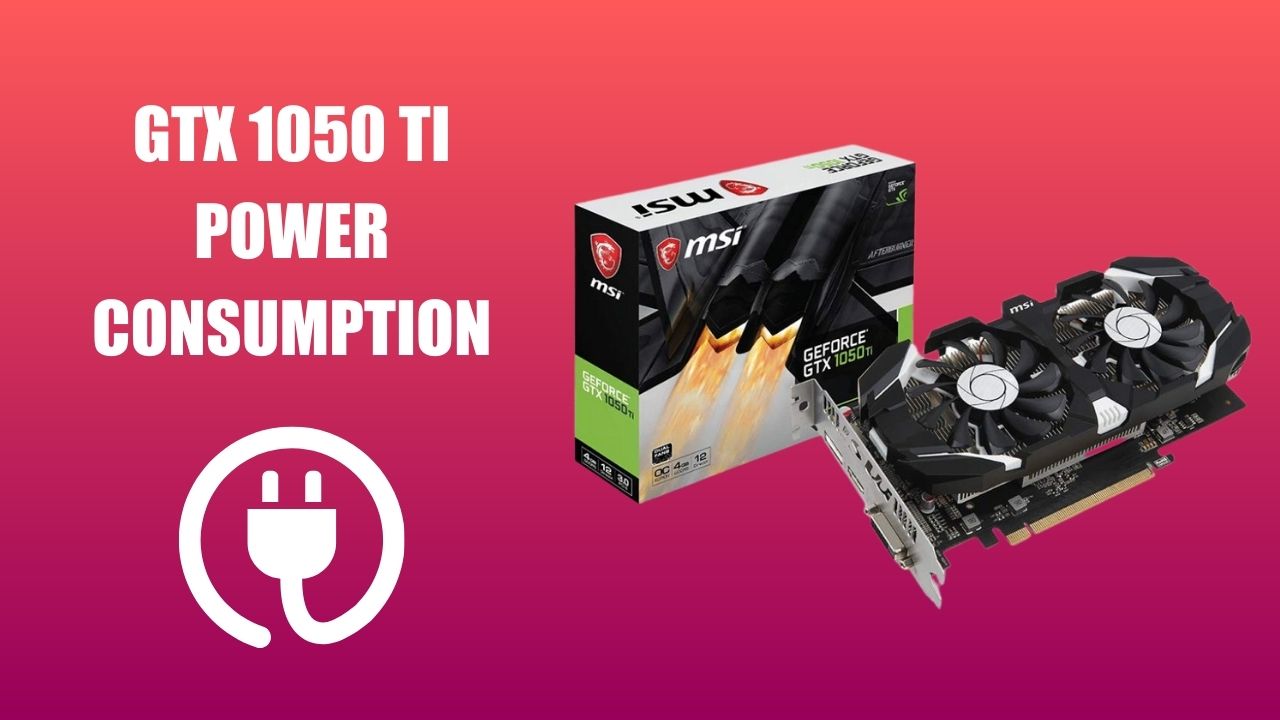The GTX 1050 Ti is an energy-efficient option, using only 67 watts on average when in use.
Even when pushed to its limits, the card has a reasonable power target of 75 watts plus 25%, which most power supply units can handle.
When combined with a Core i7 CPU that has been overclocked, these graphics cards use up to 150 watts at most. This produces a dependable and affordable choice.
For optimal performance, a power supply unit with a capacity of 300-350 watts is suggested, which is ample to power the graphics card and the entire system.
What factors influence the power consumption of a GTX 1050 Ti?
Several factors affect the power consumption of a GTX 1050 Ti.
The processing power and performance requirements of the graphics card are crucial in determining its energy usage.
Additionally, larger VRAM sizes can increase power consumption.
The efficiency of the cooling system is also important since higher temperatures can raise the power draw.
Finally, the overall system configuration, including the power supply unit and CPU performance, can impact the graphics card’s energy consumption.
Can the power consumption of a GTX 1050 Ti be optimized for better performance?
Optimizing the performance of a GTX 1050 Ti is feasible by maximizing power efficiency.
Current-gen GPUs are designed with this in mind.
However, predicting power draw for a PC can be tricky, as it varies depending on the workload.
Despite this, the GTX 1050 Ti is a low energy-consuming GPU with usage below 100W. Board partners can add external power to improve overclocking.
Additionally, the architecture of the GPU helps reduce energy bills and carbon footprints, appealing to eco-conscious gamers.
Utilizing the power-efficient architecture of the GTX 1050 Ti can optimize performance while minimizing energy consumption.
Do overclocking and underclocking affect the power usage of a GTX 1050 Ti?
Overclocking increases power use, heat generation, and performance while underclocking achieves the reverse.
The GTX 1050 Ti is engineered to manage specific power levels, eliminating concerns about overloading.
With regular use, card temperatures should not surpass 60C. To lower electricity costs, underclock your GPU to cut power consumption.
Undervolting the graphics card is another increasingly favored option, as it minimizes power use and heat generation without significantly impacting performance.
How does the power consumption of a GTX 1050 Ti vary with different display resolutions?
The GTX 1050 Ti stands as a favored mid-tier graphics card, adept at managing most games at 1080p resolution.
Nonetheless, escalating display resolution also augments the card’s power usage.
Gaming at 1440p resolution can increase power consumption by nearly 20 watts, exceeding 75 watts in total.
Consequently, the card incorporates an extra 6-pin power connector to guarantee sufficient power supply for seamless performance at elevated resolutions.
Gamers should consider their GPU’s power necessities when selecting an optimal display resolution to maximize their gaming experience.
Do third-party modifications such as water-cooling affect the power usage of a GTX 1050 Ti?
Yes. The power consumption of the fans can have a direct impact on maximum overclocking potential.
However, using a third-party tool such as ASUS GPU Tweak III can help users run the OC Scanner effectively.
While water cooling may offer better cooling performance, it can also add additional power draw to the system.







